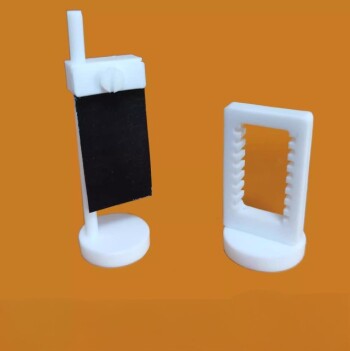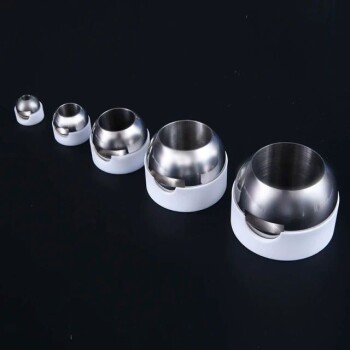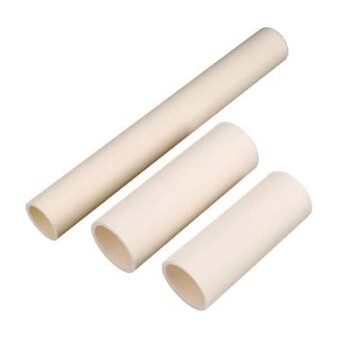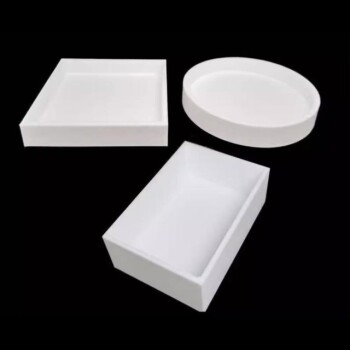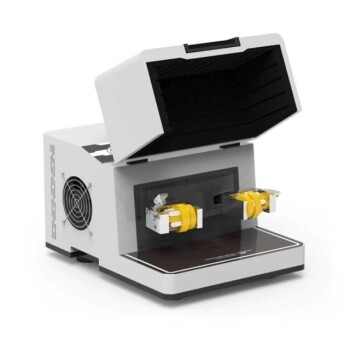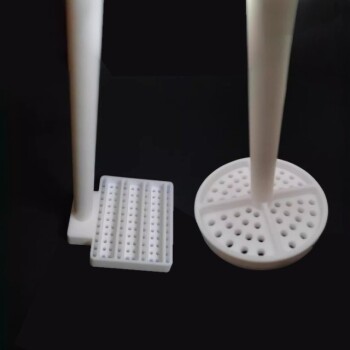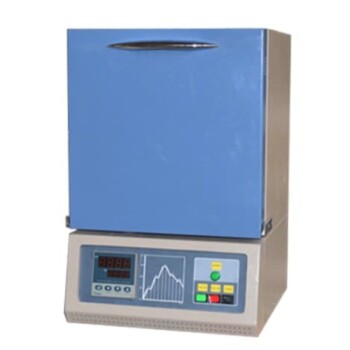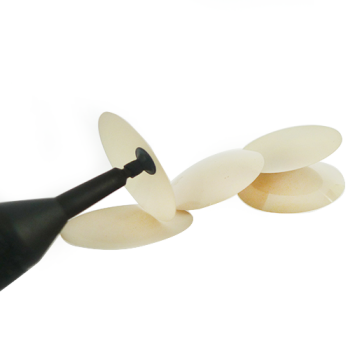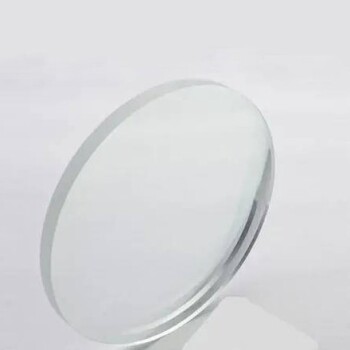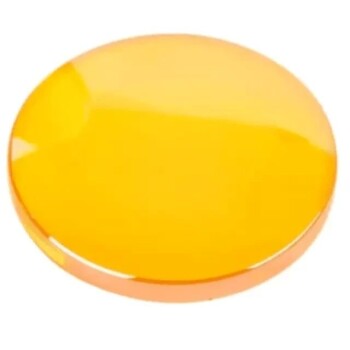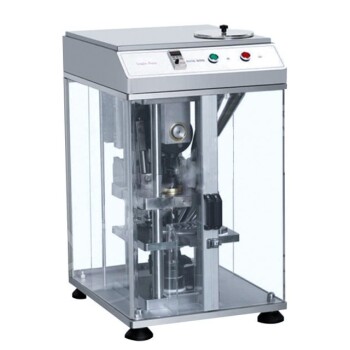Introduction to Precision Ceramics
Importance and Applications
Precision ceramic components play a pivotal role in various cutting-edge technologies due to their exceptional mechanical properties and resilience in extreme conditions. In the realm of integrated circuit manufacturing , these components are indispensable for maintaining the high precision and reliability required in semiconductor devices. Their high strength and hardness ensure that they can withstand the rigorous demands of the manufacturing process without compromising performance.
In laser technology , precision ceramics are utilized for their ability to maintain structural integrity under high-energy laser irradiation. Their resistance to thermal shock and optical clarity make them ideal for applications where precise laser beam manipulation is crucial, such as in medical lasers and industrial cutting tools.
The sensing fields benefit significantly from precision ceramics' high sensitivity and stability. These components are often used in sensors that require accurate and reliable data collection, such as those found in environmental monitoring systems and industrial automation. Their durability ensures long-term performance, even in harsh environments.
Superconducting technology leverages the unique properties of precision ceramics to achieve high-temperature superconductivity. These materials are essential in the development of superconducting magnets and other components that require low electrical resistance and high current density. Their ability to operate at higher temperatures than conventional superconductors opens up new possibilities for energy-efficient technologies.
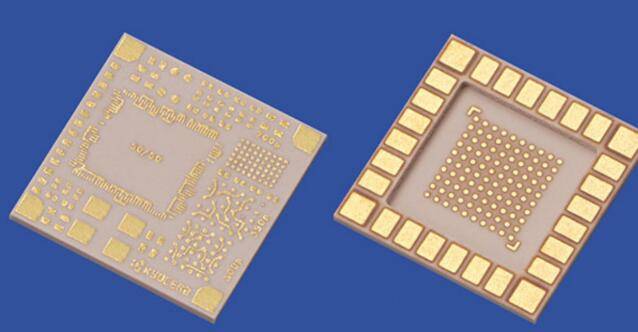
In biomedical applications , precision ceramics are prized for their biocompatibility and mechanical strength. They are used in implants and prosthetics that need to integrate seamlessly with the human body. Their resistance to corrosion and wear ensures that these medical devices remain effective over extended periods, improving patient outcomes and reducing the need for frequent replacements.
Overall, the versatility and robustness of precision ceramic components make them indispensable across multiple technological domains, driving innovation and enhancing the performance of critical systems.
Challenges and Limitations
Precision ceramics, while offering numerous advantages such as high strength and resistance to extreme environments, present significant challenges that complicate their production and use. One of the primary issues is their inherent high hardness and brittleness, which make them notoriously difficult to machine. This characteristic not only increases the complexity of the manufacturing process but also makes the materials more prone to cracks and fractures under mechanical stress.
The brittleness of precision ceramics necessitates the use of specialized machining techniques, which often come with higher operational costs. For instance, traditional cutting methods are less effective due to the material's resistance to deformation, leading to increased wear on cutting tools and higher energy consumption. Additionally, the risk of microcracks forming during machining can degrade the overall quality and performance of the final product, further escalating production expenses.
Moreover, the high hardness of these ceramics can limit their applicability in certain scenarios where flexibility and ease of shaping are required. This rigidity can also pose challenges in integrating precision ceramic components into systems that require adaptability and resilience to dynamic conditions.
In summary, while precision ceramics are highly desirable for their performance attributes, their high hardness and brittleness introduce significant manufacturing hurdles, including increased costs and the potential for product defects. Addressing these challenges requires innovative processing technologies and careful material selection to optimize the balance between performance and manufacturability.
Preparation Technologies for Precision Ceramics
Injection Molding
Ceramic injection molding (CIM) is a sophisticated process that merges traditional polymer injection techniques with advanced ceramic preparation methods. This innovative approach allows for the creation of intricate, small-scale ceramic components with exceptional dimensional accuracy and uniform density. The process begins by blending fine ceramic powders with a polymer binder, which is then injected into a mold under high pressure. Once the part is formed, the binder is removed through a debinding process, followed by sintering to achieve the final ceramic structure.
One of the key advantages of CIM is its ability to produce complex geometries that would be difficult or impossible to achieve through conventional ceramic forming methods. This capability is particularly valuable in industries such as aerospace, medical devices, and electronics, where the demand for high-performance, precision-engineered components is paramount. The uniformity in density achieved through CIM ensures consistent mechanical properties across the entire part, which is crucial for applications requiring reliability and durability.
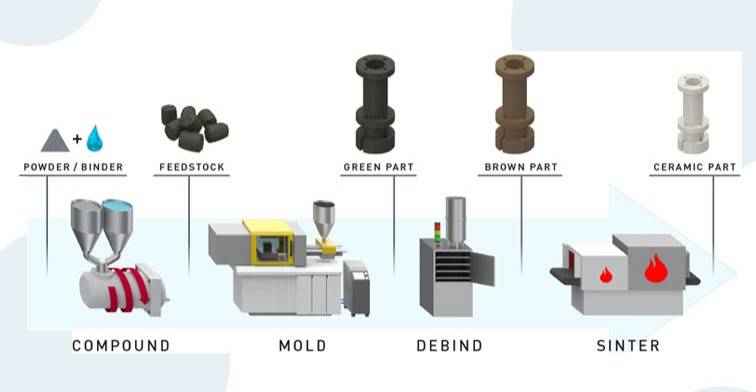
Moreover, CIM offers significant cost savings and efficiency improvements over traditional ceramic manufacturing methods. By enabling the production of near-net-shape components, CIM reduces the need for extensive post-processing, thereby lowering material waste and production time. This efficiency is further enhanced by the ability to automate the injection molding process, leading to consistent quality and reduced labor costs.
In summary, ceramic injection molding represents a cutting-edge technology that bridges the gap between polymer processing and ceramic engineering, offering a versatile solution for the production of high-precision ceramic components with remarkable performance characteristics.
Injection Gel Forming
Injection Gel Forming represents a significant advancement in ceramic manufacturing, seamlessly integrating traditional ceramic molding techniques with sophisticated organic polymerization methods. This innovative process is particularly advantageous for producing near-net-size, high-strength ceramic blanks, which are essential for the fabrication of large and intricate ceramic components. Unlike conventional methods that often require extensive post-processing to achieve desired shapes and strengths, Injection Gel Forming significantly reduces the molding cycle time, thereby enhancing production efficiency.
The process leverages the strengths of both ceramic and polymer materials, allowing for the creation of complex geometries that were previously difficult to achieve with traditional methods. By combining these technologies, manufacturers can produce ceramic components with uniform density and superior mechanical properties, making them ideal for applications requiring high precision and durability. This method not only streamlines the production process but also minimizes material waste, contributing to a more sustainable manufacturing environment.
In summary, Injection Gel Forming is a cutting-edge technique that addresses the limitations of traditional ceramic molding, offering a versatile solution for the production of high-performance ceramic components with complex shapes and short molding cycles.
3D Printing Molding
3D printing revolutionizes the manufacturing of precision ceramics by enabling the creation of highly complex parts with unprecedented speed and efficiency. Unlike traditional molding methods, 3D printing integrates advanced computer-aided design (CAD) and manufacturing processes, allowing for the layer-by-layer deposition of materials without the need for molds. This method is particularly advantageous for producing intricate ceramic components that would be challenging or impossible to create using conventional techniques.
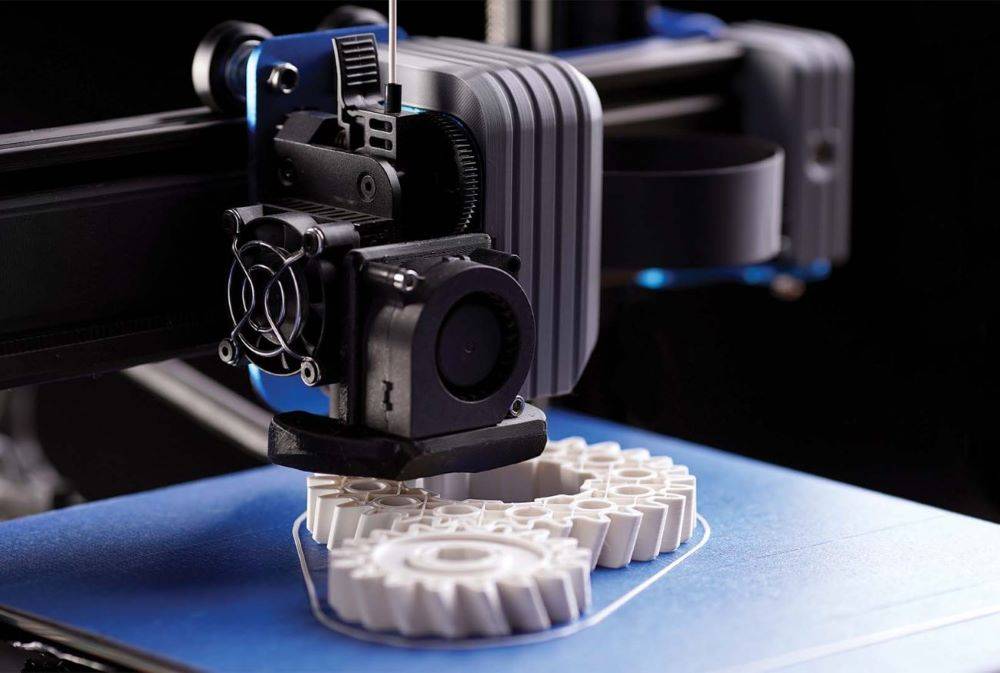
The flexibility of 3D printing extends to a wide range of ceramic materials, each with unique properties that can be harnessed for specific applications. For instance, zirconia, alumina, and silicon nitride are commonly used in 3D printing due to their high strength and resistance to extreme conditions. The ability to print these materials in complex geometries ensures that the final products meet precise dimensional requirements and performance standards.
Moreover, 3D printing significantly reduces the time required for manufacturing, as it eliminates the need for multiple tooling setups and intermediate steps. This streamlined process not only accelerates production but also minimizes waste, making it an environmentally friendly option. The following table highlights the key advantages of 3D printing in ceramic manufacturing:
| Advantage | Description |
|---|---|
| High Complexity | Ability to create intricate geometries that are difficult to achieve with molds. |
| Reduced Manufacturing Time | Eliminates the need for multiple tooling setups and intermediate steps. |
| Material Flexibility | Supports a variety of ceramic materials with unique properties. |
| Minimized Waste | Streamlined process reduces material waste and increases efficiency. |
In summary, 3D printing stands out as a transformative technology in the field of precision ceramics, offering unparalleled capabilities in terms of complexity, speed, and material versatility. Its integration into the manufacturing process paves the way for innovative solutions and enhanced performance in various industries.
Processing Technologies for Precision Ceramics
Chemical Mechanical Polishing (CMP)
Chemical Mechanical Polishing (CMP) is a critical process in the semiconductor industry, primarily utilized for achieving global planarization. This technique involves the use of nanoscale abrasive particles that, under high temperature and pressure conditions, create a new, softer substance. This softer substance facilitates easy removal and results in ultra-smooth surfaces, which are essential for the precise fabrication of semiconductor devices.
The process of CMP is highly sophisticated, involving a complex interplay of chemical and mechanical forces. The abrasive particles, often composed of materials like silica or alumina, are suspended in a slurry that also contains chemical agents. These agents react with the surface of the material being polished, creating a thin layer that is more susceptible to mechanical abrasion. The combination of chemical reactions and mechanical abrasion ensures that the material is removed uniformly, leading to a flat surface.
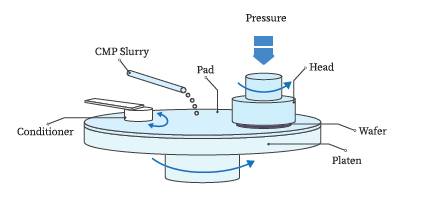
One of the key advantages of CMP is its ability to achieve global planarization, which is crucial for the fabrication of multi-layered semiconductor devices. Without planarization, the irregularities in the surface could lead to defects in subsequent layers, affecting the overall performance and reliability of the device. CMP's ability to produce ultra-smooth surfaces also reduces the likelihood of defects, thereby improving the yield and quality of semiconductor components.
In addition to its use in semiconductor manufacturing, CMP has also found applications in the production of precision ceramic components. The technique is particularly useful for materials that are hard and brittle, as it allows for the precise removal of material without causing significant damage to the underlying structure. This makes CMP an invaluable tool in the fabrication of high-performance ceramic components used in various industries, including aerospace, automotive, and medical devices.
The process of CMP, however, is not without its challenges. The high temperatures and pressures required can lead to equipment wear and tear, increasing maintenance costs. Additionally, the choice of abrasive particles and chemical agents in the slurry must be carefully optimized to ensure effective polishing without causing undue damage to the material. Despite these challenges, the benefits of CMP in achieving high-quality, ultra-smooth surfaces make it an indispensable technology in the field of precision ceramics.
Magnetorheological Polishing
Magnetorheological polishing (MRP) stands out as a cutting-edge method in the field of precision ceramics, offering unparalleled precision and efficiency. Unlike traditional polishing techniques, MRP leverages magnetorheological fluids—smart materials that change their rheological properties under the influence of a magnetic field. This unique characteristic allows for real-time adjustment of the polishing process, ensuring high precision and consistency.
One of the most significant advantages of MRP is the absence of tool wear. Traditional polishing methods often suffer from tool degradation, which can lead to inconsistencies in surface finish and require frequent tool replacements. In contrast, MRP's use of magnetorheological fluids eliminates this issue, thereby maintaining a stable removal rate and consistent surface quality throughout the process.
However, the application of MRP is not without its challenges. The process demands meticulous preparation and sophisticated equipment, which inevitably drives up costs. The complexity of setting up and operating MRP systems, coupled with the high costs associated with specialized materials and machinery, restricts its widespread adoption in industrial settings. Despite its potential to revolutionize precision polishing, the high barrier to entry limits its industrial scale, making it more suitable for niche, high-precision applications rather than large-scale production.
In summary, while MRP offers remarkable precision, efficiency, and tool longevity, its industrial application is constrained by the high costs and complex preparation required. Future advancements in technology and process optimization are essential to make MRP more accessible and cost-effective, thereby broadening its applicability in the precision ceramics industry.
ELID Grinding
ELID (Electrolytic In-process Dressing) grinding is an innovative composite mirror processing technology that integrates traditional chipping, grinding, and polishing techniques. This method employs an aqueous solution containing a weak electrolyte, which plays a crucial role in the precision machining of ceramic materials. Despite the challenges associated with its implementation, ELID grinding holds significant promise for the future of precision ceramics processing.
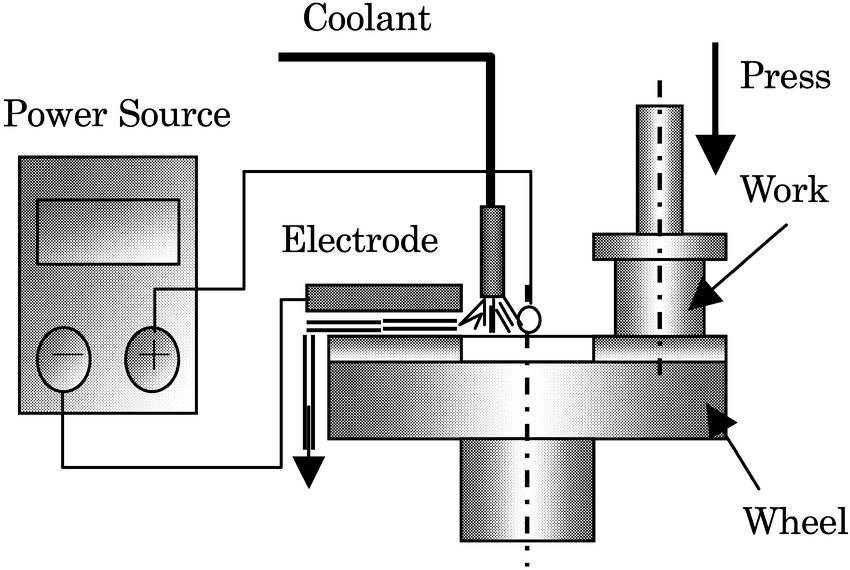
Key Features and Benefits
-
Integrated Processing: ELID grinding combines multiple traditional machining processes, including chipping, grinding, and polishing, into a single, cohesive method. This integration streamlines the manufacturing process, reducing the need for separate steps and potentially lowering production costs.
-
Electrolytic Solution: The use of an aqueous solution with a weak electrolyte is a defining feature of ELID grinding. This solution facilitates the precise removal of material, enhancing the accuracy and smoothness of the final product. The electrolytic process also helps in maintaining the sharpness of the grinding tool, which is essential for achieving high-quality results.
-
Suitability for Precision Ceramics: Given the high hardness and brittleness of precision ceramics, traditional machining methods often struggle to deliver the required precision and surface quality. ELID grinding, with its ability to handle these challenges, is particularly well-suited for the processing of precision ceramic components.
Challenges and Considerations
While ELID grinding offers several advantages, it is not without its challenges. The complexity of the electrolytic process and the need for precise control over the electrolyte solution can make it difficult to implement on a large scale. Additionally, the high initial setup costs and the requirement for specialized equipment may pose barriers to widespread adoption.
Despite these challenges, ELID grinding remains a promising technology for the future of precision ceramics. Its ability to deliver high-quality results with a streamlined process makes it a valuable tool in the ongoing quest for more efficient and effective ceramic processing methods.
In summary, ELID grinding represents a significant advancement in the field of precision ceramics processing, offering a combination of traditional and innovative techniques to address the unique challenges posed by these materials.
Laser Processing
Laser processing stands out as a non-contact, tool-less method, offering unparalleled precision that is particularly advantageous for brittle and hard ceramic materials. This technology harnesses the power of focused laser beams to manipulate materials at the micro and nano scales, making it ideal for intricate tasks that traditional machining methods struggle with.
However, while laser processing excels in precision, it is not without its challenges. Ensuring consistent precision and maintaining high surface quality can be demanding. The nature of laser processing requires meticulous control over parameters such as laser power, pulse duration, and beam focus, each of which can significantly impact the final product's quality. Additionally, the non-contact nature of the process means that monitoring and correcting for any deviations in real-time can be complex.
Despite these challenges, laser processing remains a cornerstone in the manufacturing of precision ceramics. Its ability to achieve intricate geometries and high dimensional accuracy makes it indispensable for applications where traditional methods fall short. As research and technology continue to advance, the precision and surface quality control of laser processing are expected to improve, further solidifying its role in the future of precision ceramic manufacturing.
Plasma-assisted Polishing
Plasma-assisted polishing represents a novel approach to ceramic surface finishing, leveraging the unique properties of plasma to achieve precise material removal. Unlike traditional wet polishing methods, this technique operates in a dry environment, mitigating issues related to fluid handling and disposal. Plasma irradiation, characterized by its high energy and reactive species, enables the selective etching of material surfaces, thereby facilitating the attainment of ultra-smooth finishes.

However, the adoption of plasma-assisted polishing is not without its hurdles. One of the primary challenges is the relatively lower material removal rates compared to conventional techniques. This limitation necessitates longer processing times, which can be a significant drawback in high-throughput manufacturing environments. Additionally, the specialized equipment required for plasma-assisted polishing is often prohibitively expensive, posing a financial barrier to widespread industrial implementation. Despite these challenges, ongoing research aims to optimize plasma parameters and enhance the efficiency of the process, potentially unlocking its full potential in the realm of precision ceramics.
Composite Polishing Processes
Composite polishing processes represent a significant advancement in the field of precision ceramics, offering a synergistic approach to enhance both surface quality and processing efficiency. These processes amalgamate various techniques, including ultrasonic vibration-assisted grinding and chemical-mechanical polishing (CMP), to achieve superior results.
Ultrasonic vibration-assisted grinding introduces high-frequency vibrations into the grinding process, which can significantly reduce tool wear and improve material removal rates. This method is particularly effective for hard and brittle materials like precision ceramics, where traditional grinding methods can be inefficient and prone to surface defects.
On the other hand, chemical-mechanical polishing (CMP) is a well-established technique in the semiconductor industry, known for its ability to produce ultra-smooth surfaces through the interaction of nanoscale abrasive particles and chemical reactions. When integrated with ultrasonic grinding, CMP can further refine the surface finish, achieving a level of smoothness that is critical for applications requiring high precision, such as in integrated circuits and optical components.
The combination of these methods not only improves the overall surface quality but also enhances processing efficiency. By leveraging the strengths of each technique, composite polishing processes can reduce the time and cost associated with achieving high-quality surfaces in precision ceramics. This integrated approach is particularly beneficial for complex ceramic components that require both intricate shaping and a flawless finish.
In summary, composite polishing processes are a testament to the innovative strategies employed in the field of precision ceramics, demonstrating how combining different techniques can lead to superior outcomes in terms of both quality and efficiency.
Conclusion and Future Trends
Development Trends
Reducing machining in the preparation of precision ceramic components is a significant trend, driven by the integration of near-net forming technologies that leverage high-tech advancements. These technologies are designed to achieve highly accurate shapes and high dimensional accuracy, minimizing the need for post-processing machining.
Key Near-Net Forming Technologies
| Technology | Description | Advantages |
|---|---|---|
| Injection Molding | Combines polymer injection methods with ceramic preparation processes. | Enables production of small, complex parts with uniform density. |
| Injection Gel Forming | Integrates traditional ceramic molding with organic polymerization methods. | Produces near-net-size, high-strength ceramic blanks for complex shapes. |
| 3D Printing | Utilizes computer-aided design and manufacturing for layer-by-layer buildup. | Suitable for highly complex ceramic parts without the need for molds. |
These near-net forming technologies not only enhance the precision of ceramic components but also streamline the manufacturing process, reducing costs and improving efficiency. By minimizing the need for extensive machining, these methods help to mitigate issues related to ceramic brittleness and hardness, which are common challenges in traditional machining processes.
The adoption of these advanced technologies is expected to continue growing, driven by the increasing demand for precision ceramic components in various high-tech industries, including integrated circuit manufacturing, laser technology, and biomedical applications.
Research and Development Needs

The advancement of precision ceramics is hindered by several persistent challenges, particularly in the realm of large, complex structures. These challenges manifest in various forms, including low yield rates , intricate molding processes , and elevated production costs . Addressing these issues requires a concerted effort in research and development (R&D) to innovate and optimize current methodologies.
One of the primary hurdles is the low yield rate for large, complex ceramic structures. Traditional molding techniques often struggle to maintain uniformity and structural integrity, leading to significant material waste and increased costs. This necessitates the exploration of novel molding technologies, such as 3D printing , which can offer greater control over the fabrication process and reduce waste.
The complexity of molding processes further exacerbates these challenges. Ceramic injection molding (CIM) and injection gel forming, while effective for smaller components, face scalability issues when applied to larger, more intricate designs. The development of more versatile and scalable molding techniques is crucial to overcoming these limitations. For instance, integrating composite polishing processes with traditional methods could enhance the precision and efficiency of large-scale production.
Moreover, the high costs associated with precision ceramic manufacturing pose a significant barrier to widespread adoption. These costs are driven by the need for specialized equipment, skilled labor, and extensive post-processing. To mitigate this, there is a pressing need for cost-effective alternatives and process optimizations. Technologies like ELID grinding and plasma-assisted polishing show promise in reducing costs while maintaining high-quality standards.
In summary, the ongoing R&D efforts must focus on improving yield rates, simplifying complex molding processes, and reducing production costs. By leveraging emerging technologies and integrating advanced methodologies, the field of precision ceramics can overcome these challenges and pave the way for broader industrial applications.
Related Products
- Custom PTFE Teflon Parts Manufacturer for Hydrothermal Synthesis Reactor Polytetrafluoroethylene Carbon Paper and Carbon Cloth Nano-growth
- Custom PTFE Teflon Parts Manufacturer for PTFE Ball Valve Seat
- High Temperature Alumina (Al2O3) Furnace Tube for Engineering Advanced Fine Ceramics
- Custom PTFE Teflon Parts Manufacturer for Culture Dish and Evaporation Dish
- Custom PTFE Teflon Parts Manufacturer for Non-Standard Insulator Customization
Related Articles
- PTFE's high temperature and corrosion resistance: Why it is indispensable in industry
- Chemical Vapor Deposition (CVD) Process and High Purity PFA Tubing
- Commonly Used Organic Experimental Reaction Devices
- PTFE seals: the invisible guardian of industrial leakage prevention
- The Role and Types of Crucibles in Scientific Experiments

